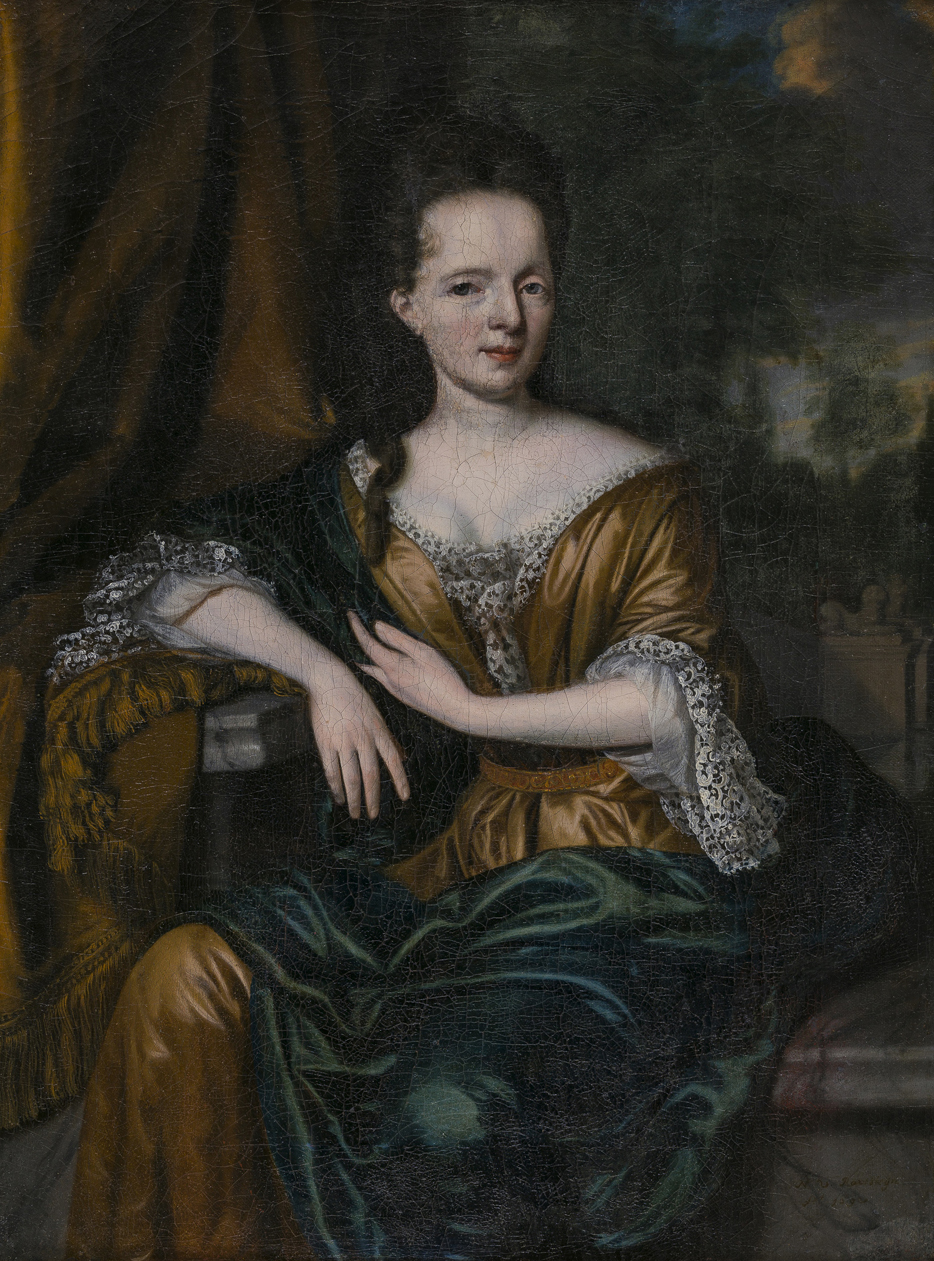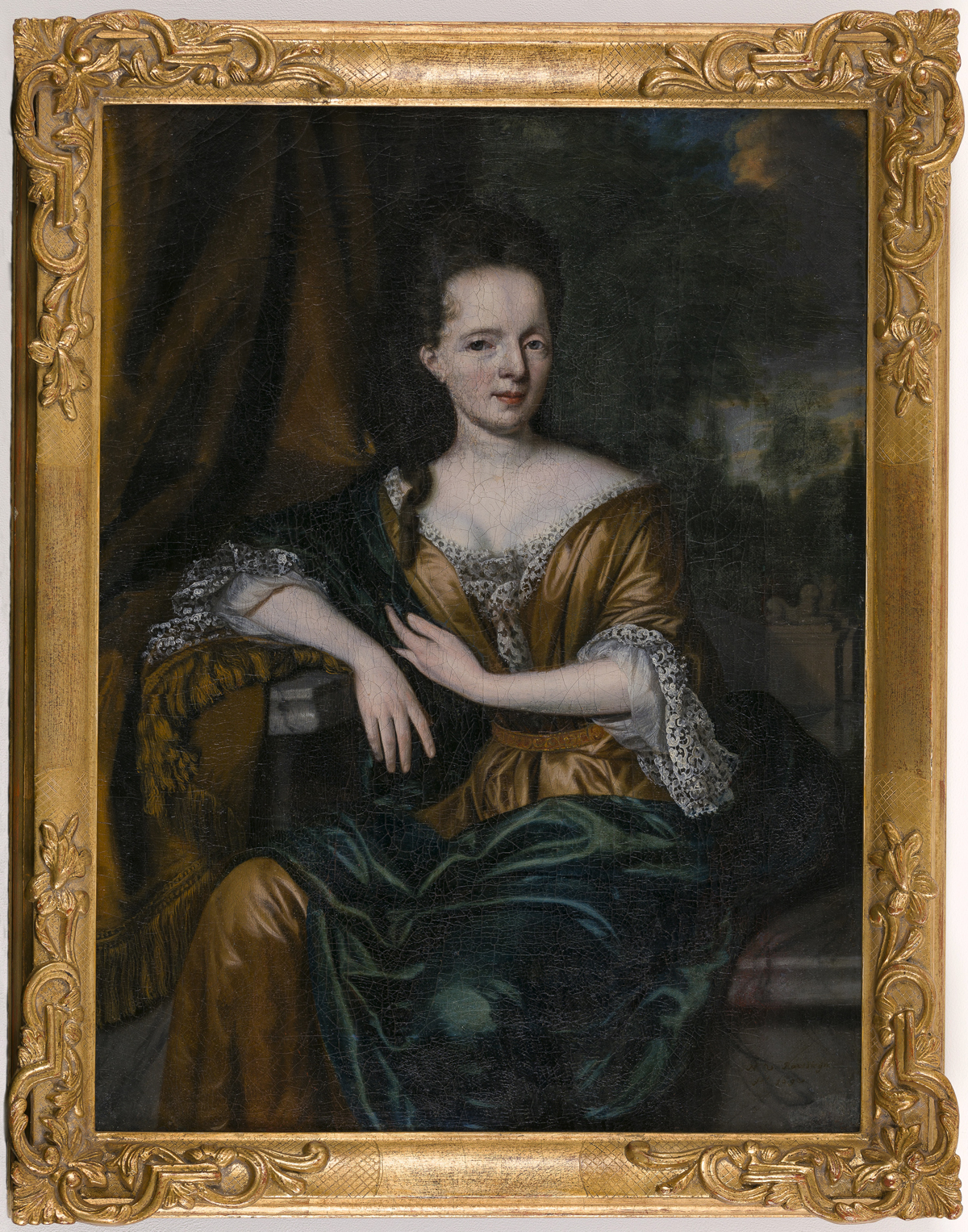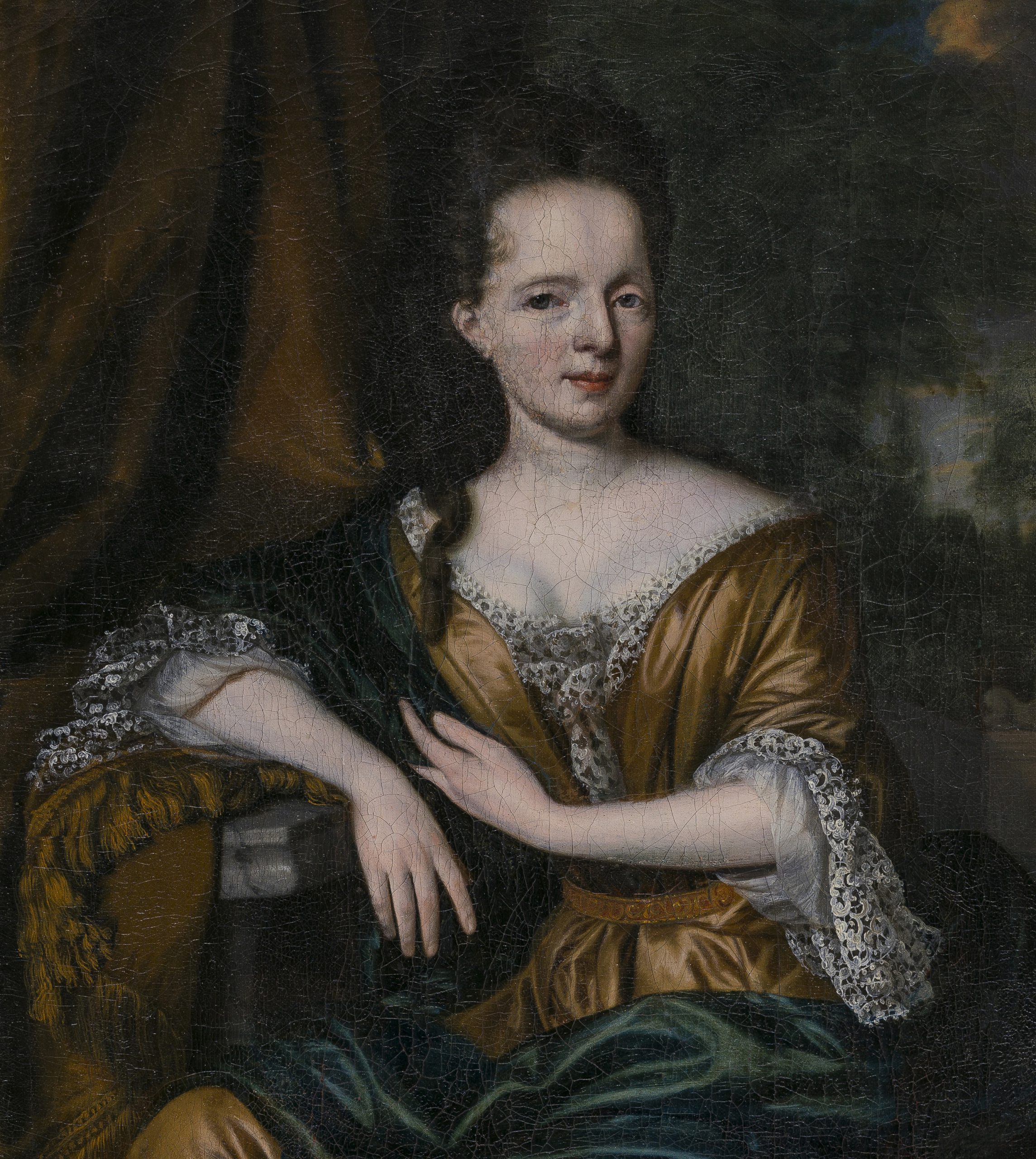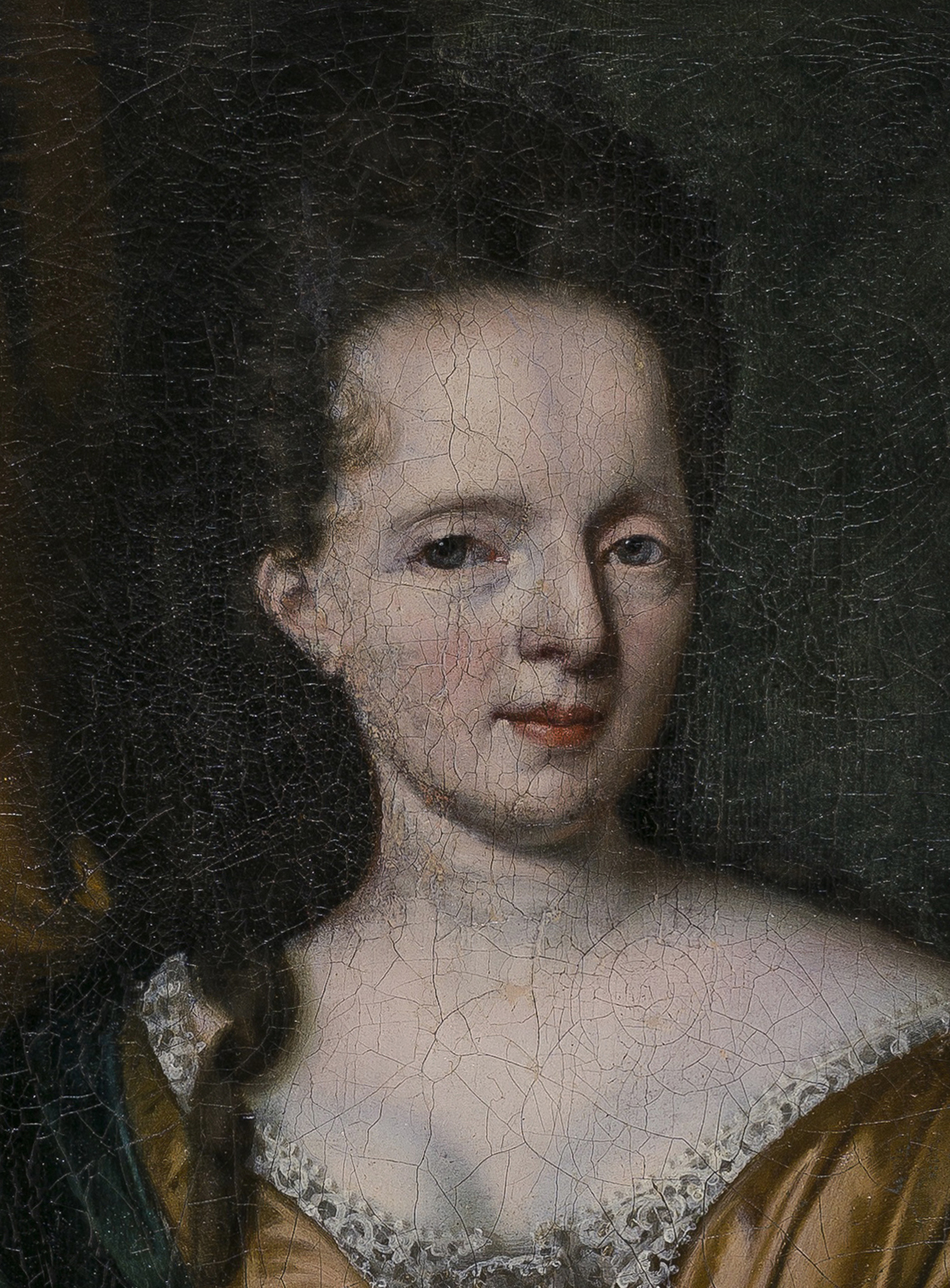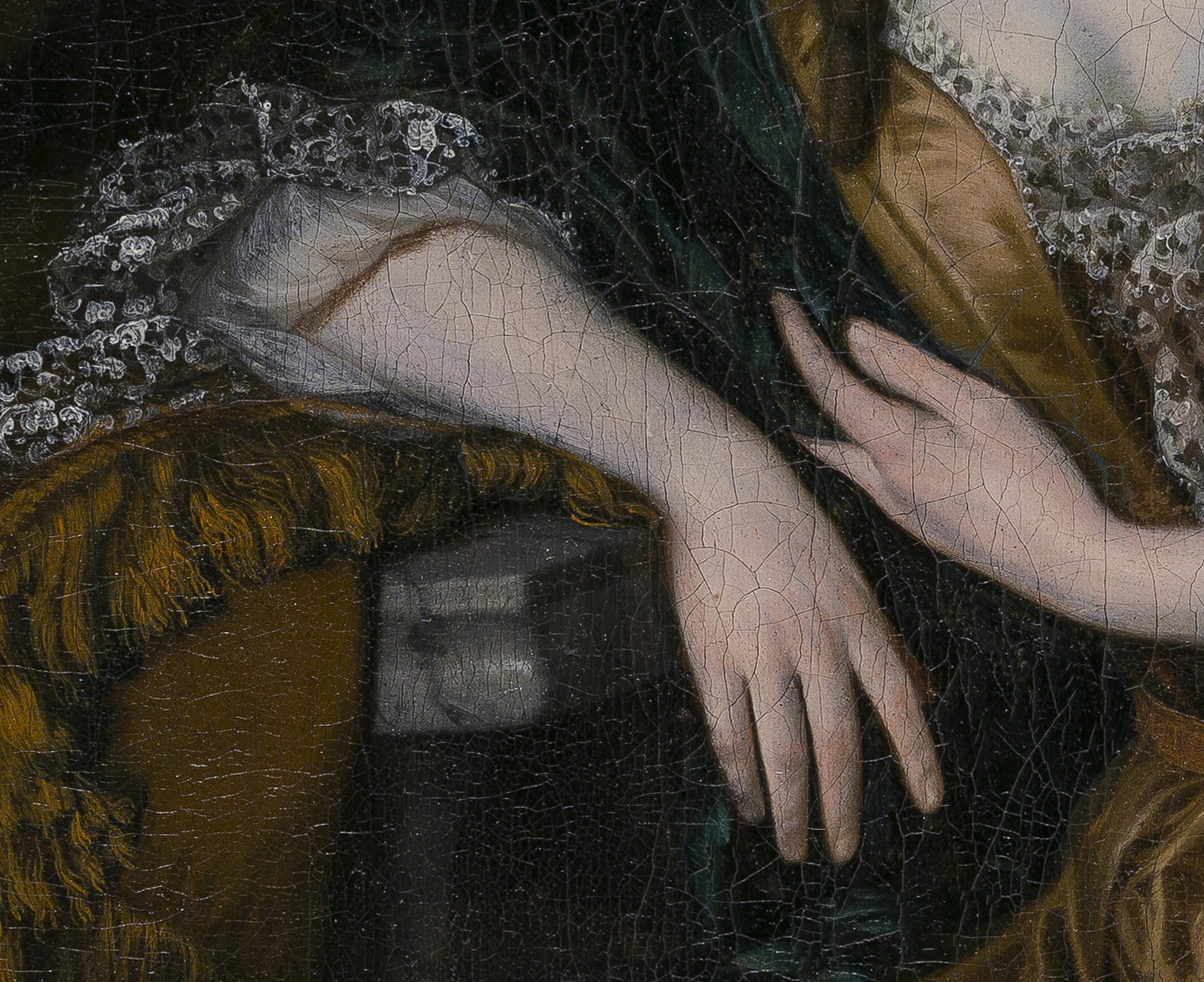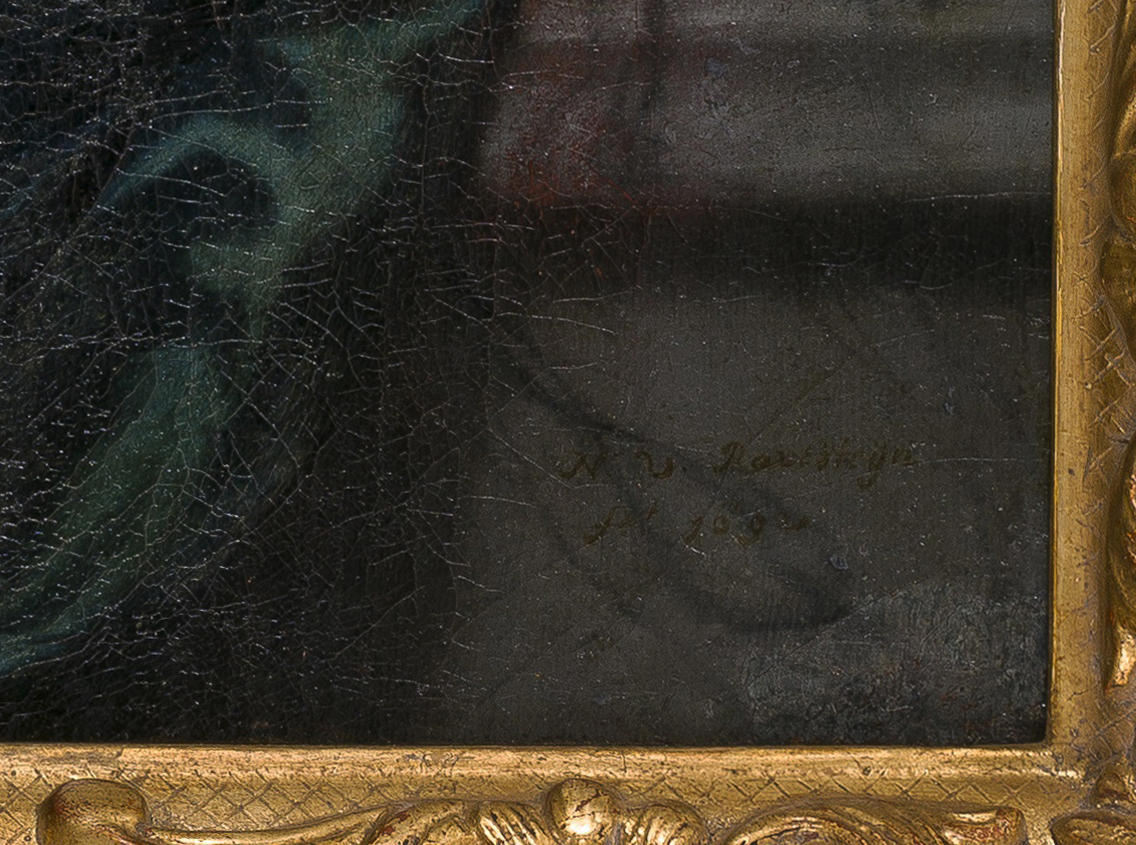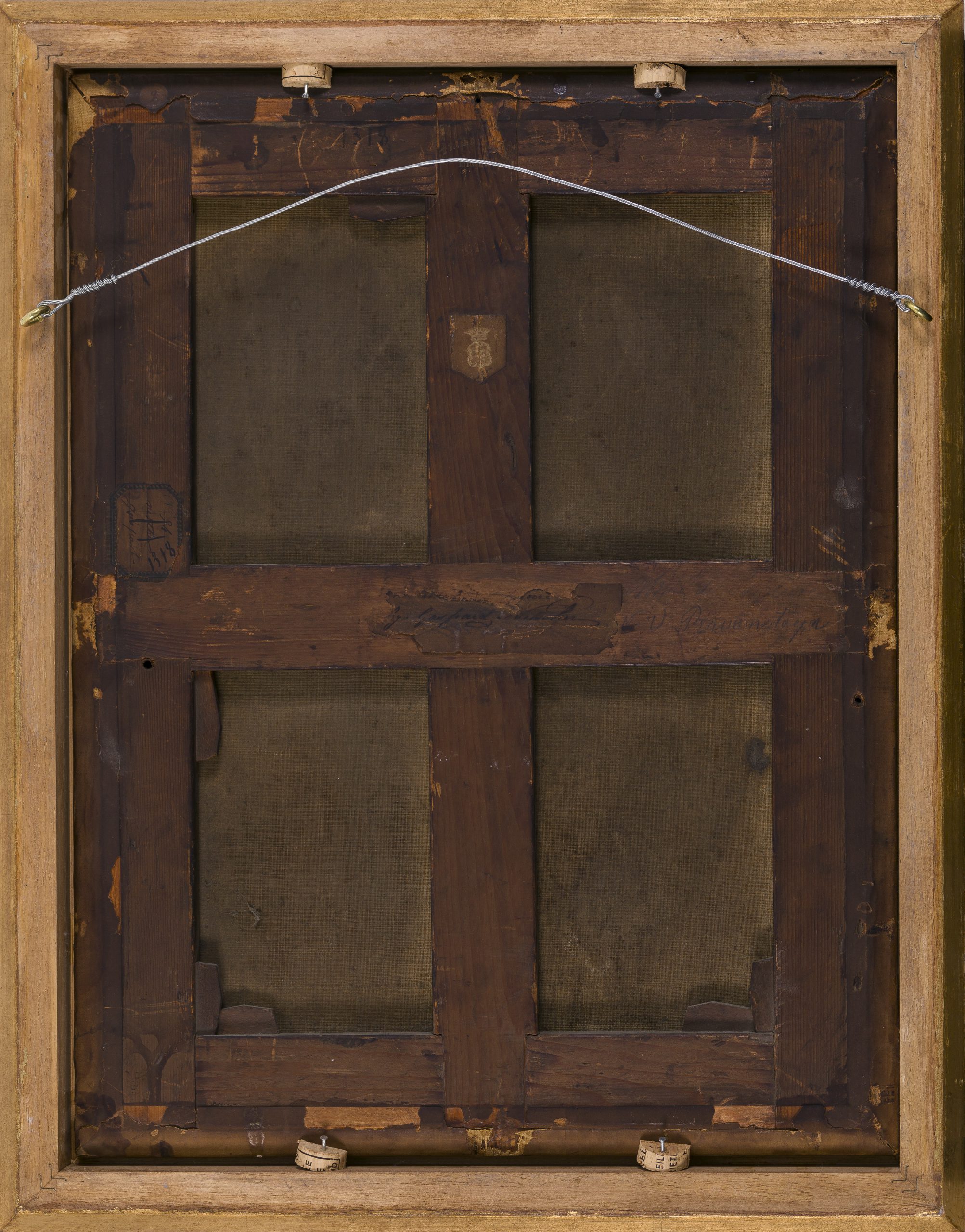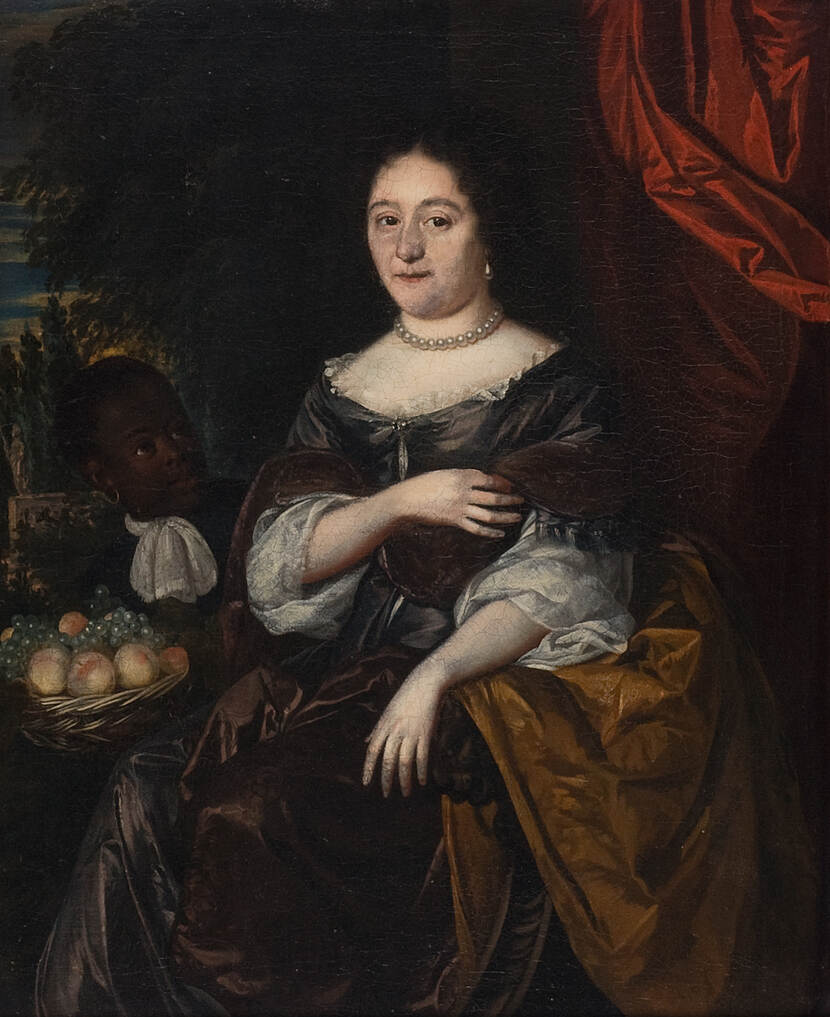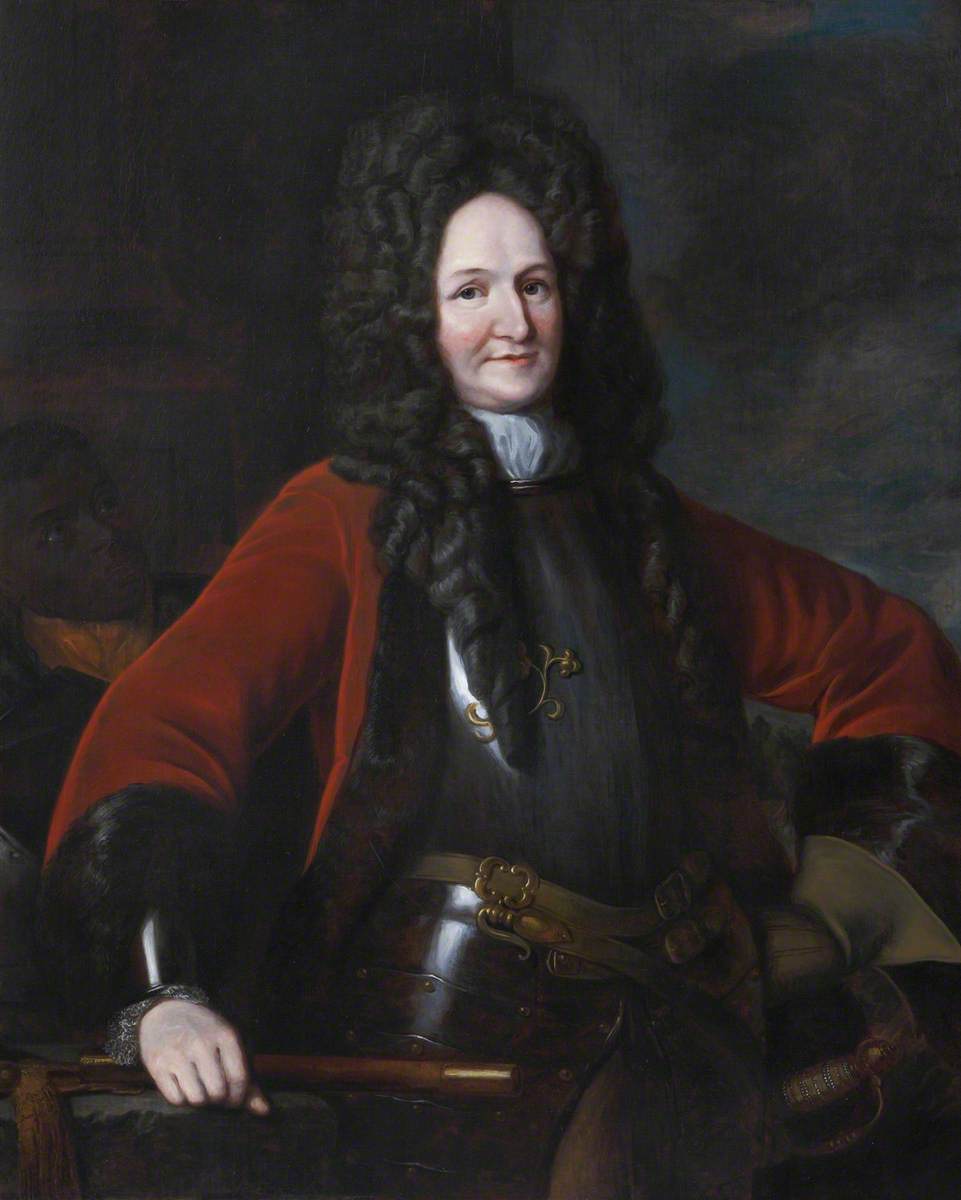NICOLAES VAN RAVESTEYN (Zaltbommel 1661 – 1750 Zaltbommel)
Nicolaes van Ravesteyn (Zaltbommel 1661 – 1750 Zaltbommel)
Portrait of a Lady
Oil on canvas, 47.1 x 35.5 cm (18.5 x 14 inch); presented in a modern giltwood frame of 18th-century model
Signed and dated ‘N. v. Ravesteyn / 169[2?]’ (lower right)
On the reverse of the stretcher, a fragment of a printed and embossed label with crowned coat-of-arms; also inscribed in pencil ‘Marie de Sabliere [?] / N. V. Ravensteyn’; also a fragmentary label inscribed in pen and brown ink ‘… by Gaspard Netscher’, and also another label ‘No. 94 / 1318 / netscher / gaspard’
***
Nicolaes van Ravesteyn was a member of a leading family of painters and was the foremost artist in Zaltbommel for over sixty years, from the late 1680s to his death in 1750. Though he was among the most notable portrait painters of the first half of the eighteenth century in the Netherlands, favoured by princes and nobility, only some thirty or so of his works are currently known. Van Ravesteyn has largely been forgotten and mostly ignored in art-historical literature: little has been written on him since he was ‘discovered’ by the eminent art historian Abraham Bredius in 1891.1 The works of Van Ravesteyn are especially interesting as they document the social milieu of the elite of Zaltbommel and its environs during the first half of the eighteenth century – in recent years, research has been carried out into the presence of several coloured attendants in portraits by Van Ravesteyn of members of the Zaltbommel elite, as will be discussed below.
Nicolaes was the son of Hendrik van Ravesteyn, a portrait painter who was taught in The Hague and portrayed members of German noble courts, but who sadly died young in 1670. Nicolaes was taught the art of painting by Gerard Hoet in Zaltbommel, and then finished his apprenticeship with Willem Doudyns and Jan de Baen in The Hague.2 He assimilated the refined court manner of his masters and became highly successful after he settled as an independent master in his home town of Zaltbommel, where he resided for the rest of his long life – in his preference to live in this town he was diametrically opposed to Zaltbommel’s other great artist of the period, Gerard Hoet (1648–1733), who was born in the town but did not live there after his artistic training.
Between 1694 and 1704 Van Ravesteyn repeatedly travelled to Culemborg, where he painted portraits of members of the princely family of Waldeck, as was reported by his biographer, Jan van Gool – many of the details of Ravesteyn’s life are known from this biography.3 In 1702 he also travelled to Kassel in Germany, to paint the portrait of Wilhelm, Landgrave of Hessen-Kassel. Van Gool furthermore lists portraits of the family of the Count of Erbach, the Count of Saksen-Hildburghausen, Baron Van Gent and his wife, the Princess of Portugal, Count Van Rheede, members of the Van Heeckeren and Eck van Panthaleon families and magistrates of the town of Gorinchem; many of these portraits are only known from their references by Van Gool. For his own house in Zaltbommel he painted large-scale decorative works of the Four Continents.
Our well preserved portrait can be compared to one of Ravesteyn’s most iconic and fascinating works, the portrait of Anna de Bye, ‘Vrouwe’ of Wayestein (1636–1713), wife of Jacob van den Steen, attended by a coloured boy, holding a basket with fruit (fig.).4 Of the thirty or so portraits by Ravesteyn which are currently known, no less than six also have representations of coloured servants, including a portrait of Anna de Bye’s son-in-law Isaac de Perponcher Sedlnitsky, commander of Hulst. Anna was born and lived in Zaltbommel, and must have known Van Ravesteyn well. Her sister, Clara de Bye (b.1654) was married in 1673 in Zaltbommel to General Hugh Mackay of Scoury (1640–1692), whose portrait by Van Ravesteyn survives in the National Army Museum in London (fig.).5 Interestingly, a coloured attendant can also be seen in the portrait of Mackay – although it is not known if Anna de Bye, her son-in-law Isaac de Perponcher and brother-in-law General Mackay actually had servants of colour, the frequent occurrence in portraits by Van Ravesteyn of these notables from Zaltbommel and their direct circles, would suggest that such coloured servants could indeed be found in the wealthiest households of Zaltbommel, and that they were regarded as symbols of wealth, power and culture. Although the identity of the elegant lady depicted in the present portrait is lost to time, she should be placed in a similar milieu to these documented portraits.
In addition to these portraits and four other works of members of the Van den Steen family in the Instituut Collectie Nederland, other portraits by Van Ravesteyn are preserved in Huis Zypendaal, Arnhem, the town hall in Tiel, the Hoge Raad van Adel in The Hague, the Fries Museum in Leeuwarden and the Scottish National Portrait Gallery in Edinburgh.
SOLD
1. For the artist, see: A. Bredius and E.W. Moes, 'De schildersfamilie Ravesteyn (eerste gedeelte)', Oud-Holland 9 (1891), p. 207-220, esp. p. 215-217.
2. See Edwin Buijsen and Charles Dumas (eds.), Haagse schilders in de Gouden Eeuw, The Hague 1998, pp. 340-41.
3. Johan van Gool, De nieuwe schouwburg der Nederlantsche kunstschilders en schilderessen (…), The Hague 1750-51, vol. II, pp. 445-46.
4. Oil on canvas, 85 x 74 cm, Instituut Collectie Nederland, inv. no. C2014, see Sporen van slavernij en koloniaal verleden, editie 1, 12 December 2019.
5. Oil on canvas, inv. no. NAM 1961-06-9-1; E.W. Moes, Iconographia Batava: beredeneerde lijst van geschilderde en gebeeldhouwde portretten van Noord-Nederlanders in vorige eeuwen, Amsterdam 1897vol. 2 (1905), p. 48, no. 4716.
